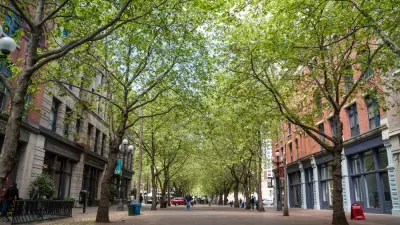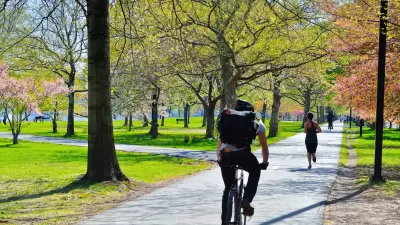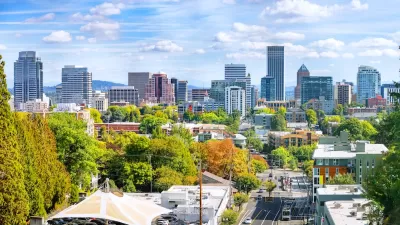Growth and development are the biggest obstacles to Washington, D.C.'s plans to add more than 10,000 trees every year over the next 25 years.

John D. Harden details the ongoing effort to replant the District of Columbia with trees—an effort frustrated recently by the District's recent rate of development and economic growth.
"As part of a concentrated, six-month effort that began in October, crews planted more than 8,500 trees in an attempt to shroud 40 percent of the city under tree canopy by 2032," writes Harden. "But midway through a years-long tree campaign, the same economic successes that ushered in new residents and transformed neighborhoods across Washington are threatening to stymie the city’s woodland progress."
The District has added about 100,000 trees in the past decade, according to the article, but is running out of space to plant more, even as the District prepares a comprehensive plan update that calls for both new development and new trees.
"Andrew Trueblood, director of the D.C. Office of Planning, acknowledged the contradiction, saying the document serves as a framework for city leaders," reports Harden. "The challenge will be determining how to prioritize its recommendations."
The article includes more context, with testimonies from experts and city officials on the challenges, and the benefits, of the effort to replant trees in the District.
FULL STORY: D.C. planted nearly 80 trees a day to reach a canopy target. It’s running out of space.

Alabama: Trump Terminates Settlements for Black Communities Harmed By Raw Sewage
Trump deemed the landmark civil rights agreement “illegal DEI and environmental justice policy.”

Planetizen Federal Action Tracker
A weekly monitor of how Trump’s orders and actions are impacting planners and planning in America.

Why Should We Subsidize Public Transportation?
Many public transit agencies face financial stress due to rising costs, declining fare revenue, and declining subsidies. Transit advocates must provide a strong business case for increasing public transit funding.

Understanding Road Diets
An explainer from Momentum highlights the advantages of reducing vehicle lanes in favor of more bike, transit, and pedestrian infrastructure.

New California Law Regulates Warehouse Pollution
A new law tightens building and emissions regulations for large distribution warehouses to mitigate air pollution and traffic in surrounding communities.

Phoenix Announces Opening Date for Light Rail Extension
The South Central extension will connect South Phoenix to downtown and other major hubs starting on June 7.
Urban Design for Planners 1: Software Tools
This six-course series explores essential urban design concepts using open source software and equips planners with the tools they need to participate fully in the urban design process.
Planning for Universal Design
Learn the tools for implementing Universal Design in planning regulations.
Caltrans
Smith Gee Studio
Institute for Housing and Urban Development Studies (IHS)
City of Grandview
Harvard GSD Executive Education
Toledo-Lucas County Plan Commissions
Salt Lake City
NYU Wagner Graduate School of Public Service





























